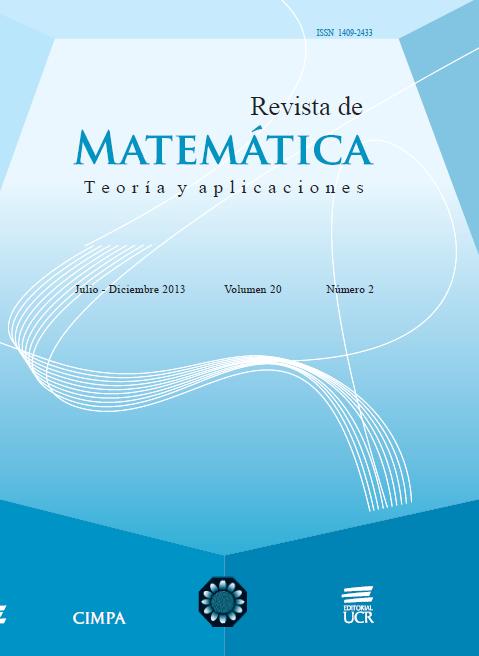Resumen
Los niveles del mar crecen alrededor del mundo, y este es un problema que afecta a la mayoría de las costas en los Estados Unidos. Un reporte de 1989 de la Agencia de Protección Ambiental de los Estados Unidos (EPA, por sus siglas en inglés) muestra que el nivel del mar creció de 5 a 6 pulgadas más que el promedio global en el Atlántico Medio y la costa del Golfo en el siglo pasado. La principal razón para esto es el hundimiento de la tierra costera. Este crecimiento del nivel del mar es considerado más como uno relativo antes que global. Así, en lugar de estudiar el crecimiento global del nivel del mar, este artículo describe un enfoque estadístico usando análisis factorial del cambio en las razones del nivel del mar regional. Contrario a los modelos físicos o semiempíricos, que tratan de aproximar qué tanto y qué tan rápido cambian los niveles del mar, esta metodología permite una discusión de los factores que afectan estadísticamente las razones de cambio del nivel del mar, y busca patrones que expliquen correlaciones espaciales.
Citas
Battisti, D.; Naylor, R. (2009) “Historical warnings of future food insecurity with unprecedented seasonal heat”, Science 323: 240–244.
Dai, A. (2010) “Drought under global warming: A review”, WIREsClim Change: doi:10.1002/wcc.81.
Dokka, R. (2006) “Modern-day tectonic subsidence in coastal Louisiana”, Geology 34(4): 281–284.
EPA (1989) “The potential effects of global climate change on the United States”. Report to Congress. Washington, D.C.: U.S. Environmental Protection Agency. EPA 230-05-89-052.
EPA (2009) “Coastal sensitivity to sea-level rise: A focus on the mid-atlantic region”. U.S. Climate Change Science Program: Synthesis and Assessment Product 4.1.
Favali, P.; Funiciello, R; Mattietti, G.; Mele, G.; Salvini, F. (1993) “An active margin across the adriatic sea (central Mediterranean sea)”, Tectonophysics 219: 109–117.
FitzGerald, D.; Fenster, M.; Argow, B.; Buynevich, I. (2008) “Coastal impacts due to sea-level rise”, Annual Review of Earth and Planetary Science 36: 601–647.
Hofmann-Wellenhof, B.; Moritz, H. (2006) Physical Geodesy. Springer Wien, New York.
IPCC (2007) “Climate change 2007: The physical science basis”, in: S. Solomon, D. Qin, M. Manning, Z. Chen, M. Marquis, K.B. Averyt, M. Tignor & H.L. Miller (Eds.) Contribution of Working Group I to the Fourth Assessment Report of the Intergovernmental Panel on Climate Change. Cambridge University Press, Cambridge, United Kingdom and New York, U.S.A.
Kuhnt, W.; Holbourn, A.; Hall, R.; Zuvela, M.; Käse, R. (2004) “Neogene history of the Indonesian throughflow”, in: P. Clift, P. Wang, W. Kuhnt & D. Hayes (Eds.) Continent-Ocean Interactions within East Asian Marginal Seas, Geophysical Monograph Series 149, The American Geophysical Union: 299–320.
Lu, J.; Vecchi, G.; Reichler, T. (2007) “Expansion of the hadley cell under global warming”, Geophysical Research Letters 34, L06805, doi:10.1029/2006GL028443.
Montagna, P.; Gibeaut, J.; Tunnell, J. Jr. (2007) “South Texas climate 2100: Coastal impacts”, in: J. Norwine & K. John (Eds.) South Texas Climate 2100: Problems and Prospects, Impacts and Implications, CREST-RESSACA, Texas A&M University-Kingsville, Kingsville, Texas: 57–77.
Nicholls, R.; Cazenave, A. (2010) “Sea-level rise and its impact on coastal zones”, Science 328: 1517–1520.
Paine, J. (1993) “Subsidence of the Texas coast: Inferences from historical and the pleistocene sea levels”, Tectonophysics 222: 445–458.
Rahmstorf, S. (2007) “A semi-empirical approach to projecting future sea-level rise”, Science 315: 368–370.
Rahmstorf, S. (2012) “Modeling sea level rise”, Nature Education Knowledge 3(3): 4.
Roemmich, D. (1992) “Ocean warming and sea level rise along the southwest u.s. coast”, Science 257: 373–375.
Sadovski, A.; Jeffress, G.; Tissort, P.; Duff, S.; Ussery, S. (2010) “Mean sea level-What are the recent changes along the Texas Gulf Coast?”, Sea Level Rise Conference, Corpus Christi, Texas, U.S.A.:poster.
Sea Level Research Group at University of Colorado: http://sealevel.colorado.edu/
Williams, S.; Gutierrez, B.; Titus, J.; Gill, S.; Cahoon, D.; Thieler, E.; Anderson, K. (2009) “Sea-level rise and its effects on the coast”, in: Titus et al. (Eds.) Coastal Sensitivity to Sea-Level Rise: A Focus on the Mid-Atlantic Region, Synthesis and Assessment, Product 4.1 Report by the U.S. Climate Change Science Program and the Subcommittee on Global Change Research: 11–23.
##plugins.facebook.comentarios##

Esta obra está bajo una licencia internacional Creative Commons Atribución-NoComercial-CompartirIgual 4.0.
Derechos de autor 2013 Alexey Sadovski, Hongzhi Song, Gary Jeffress





